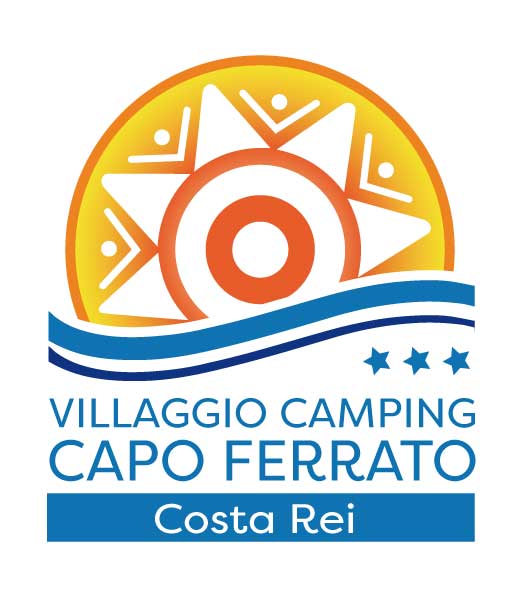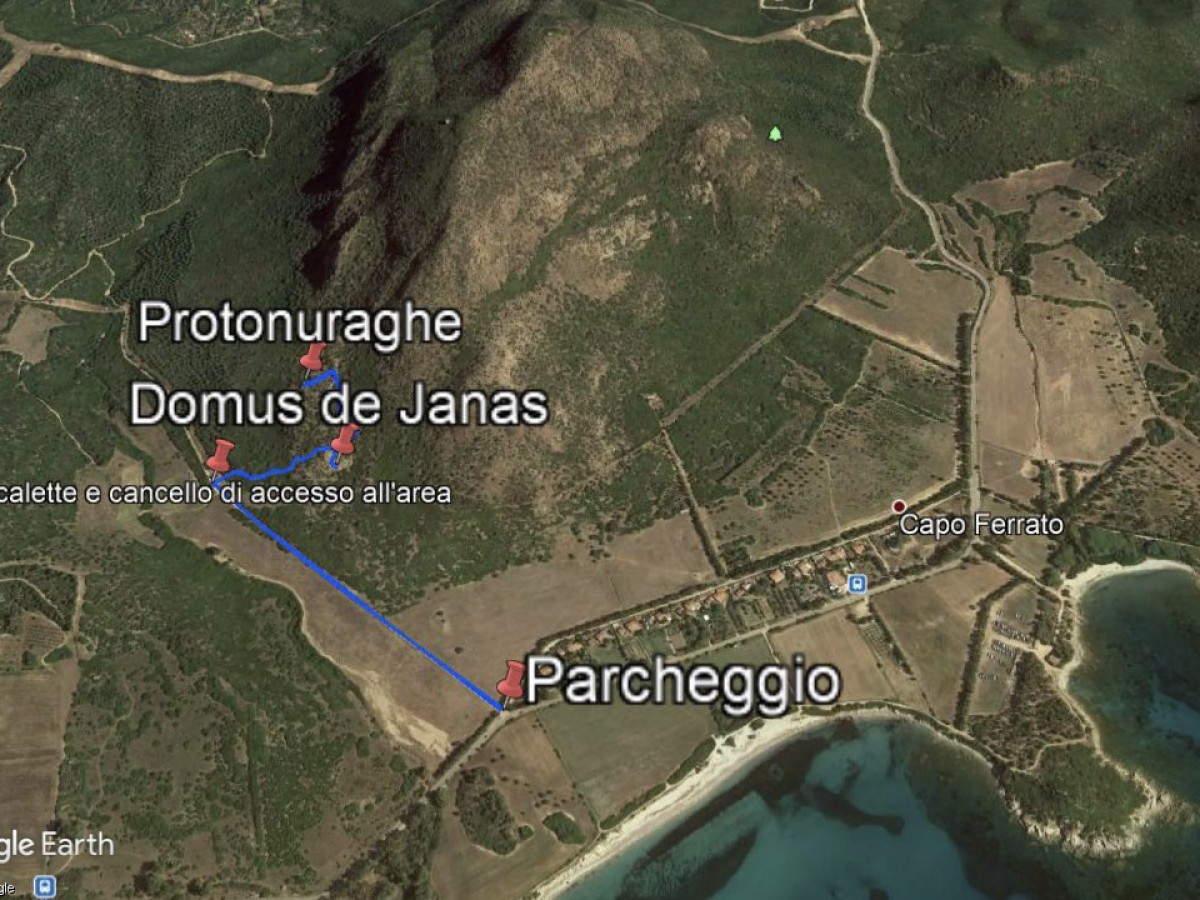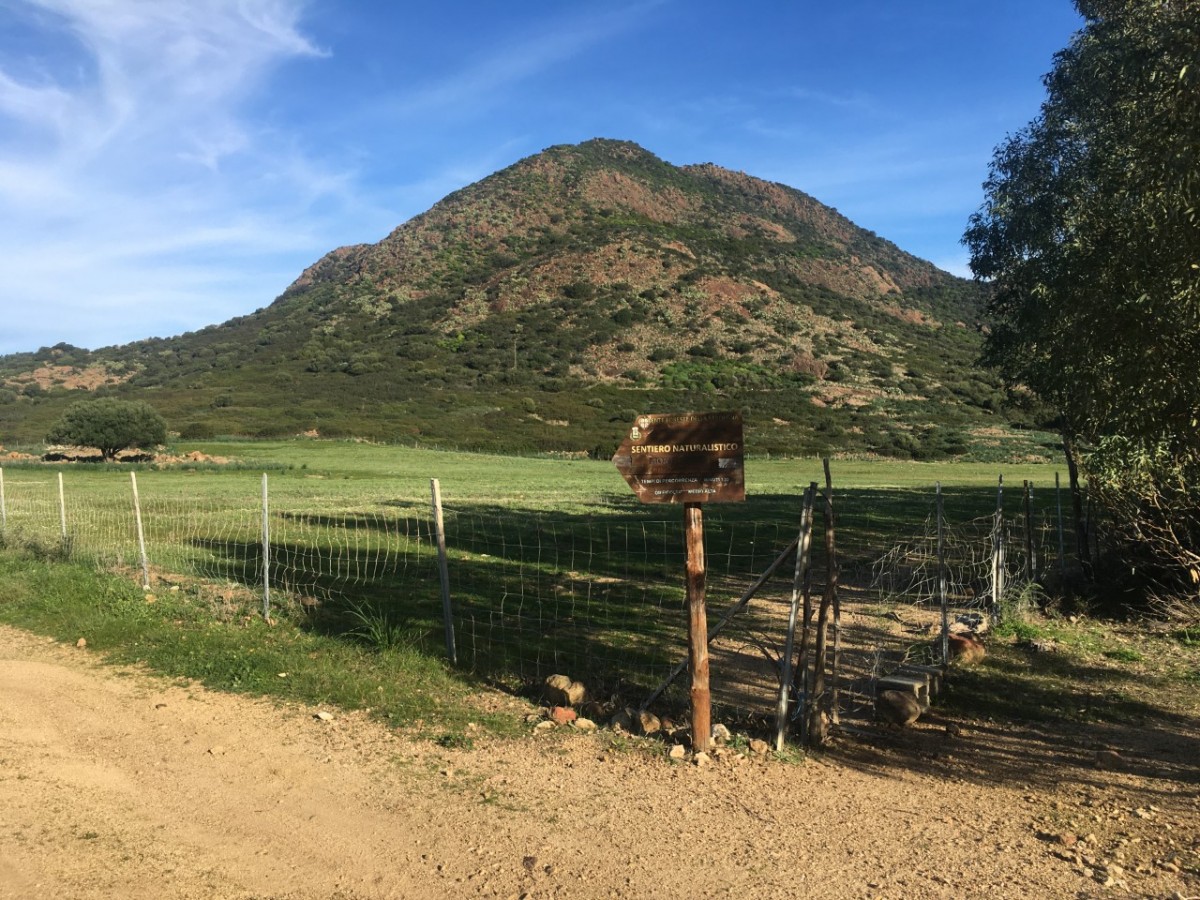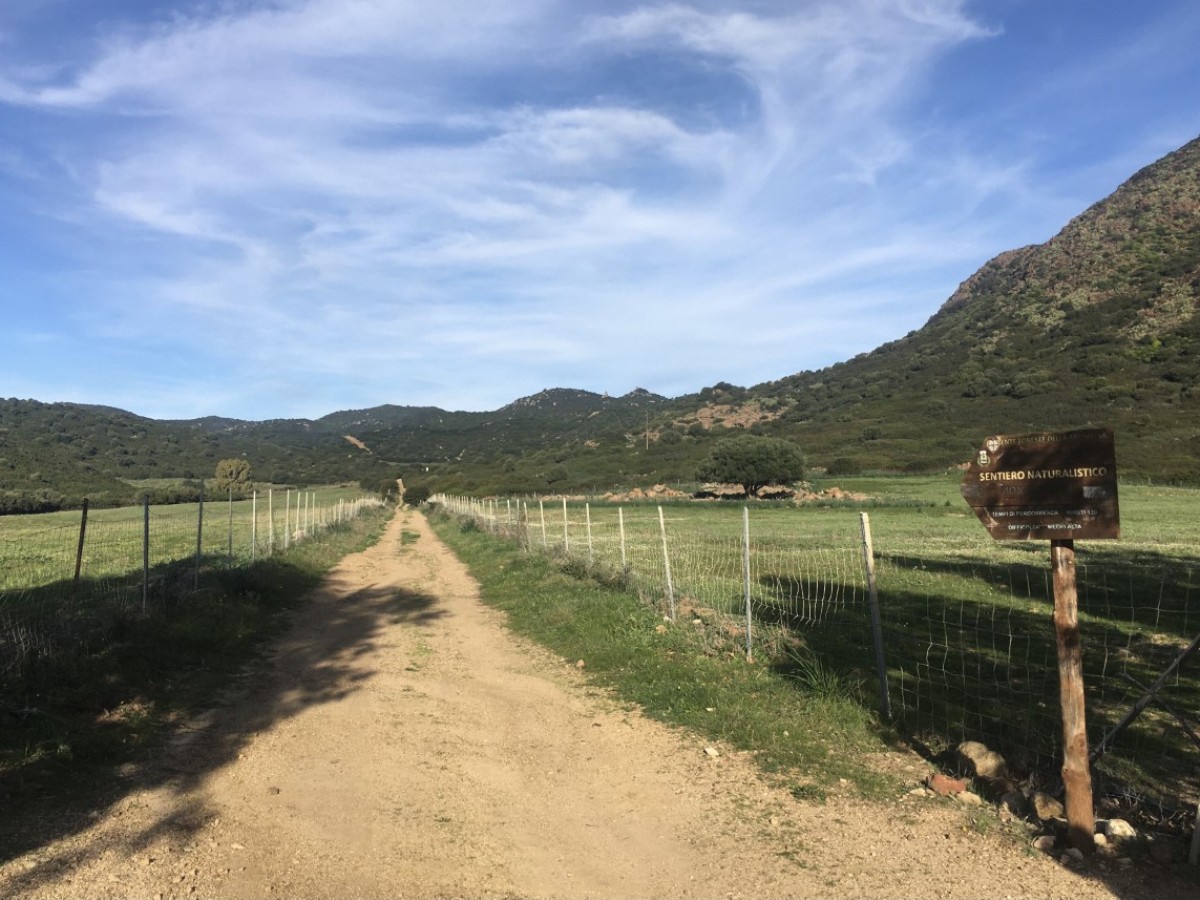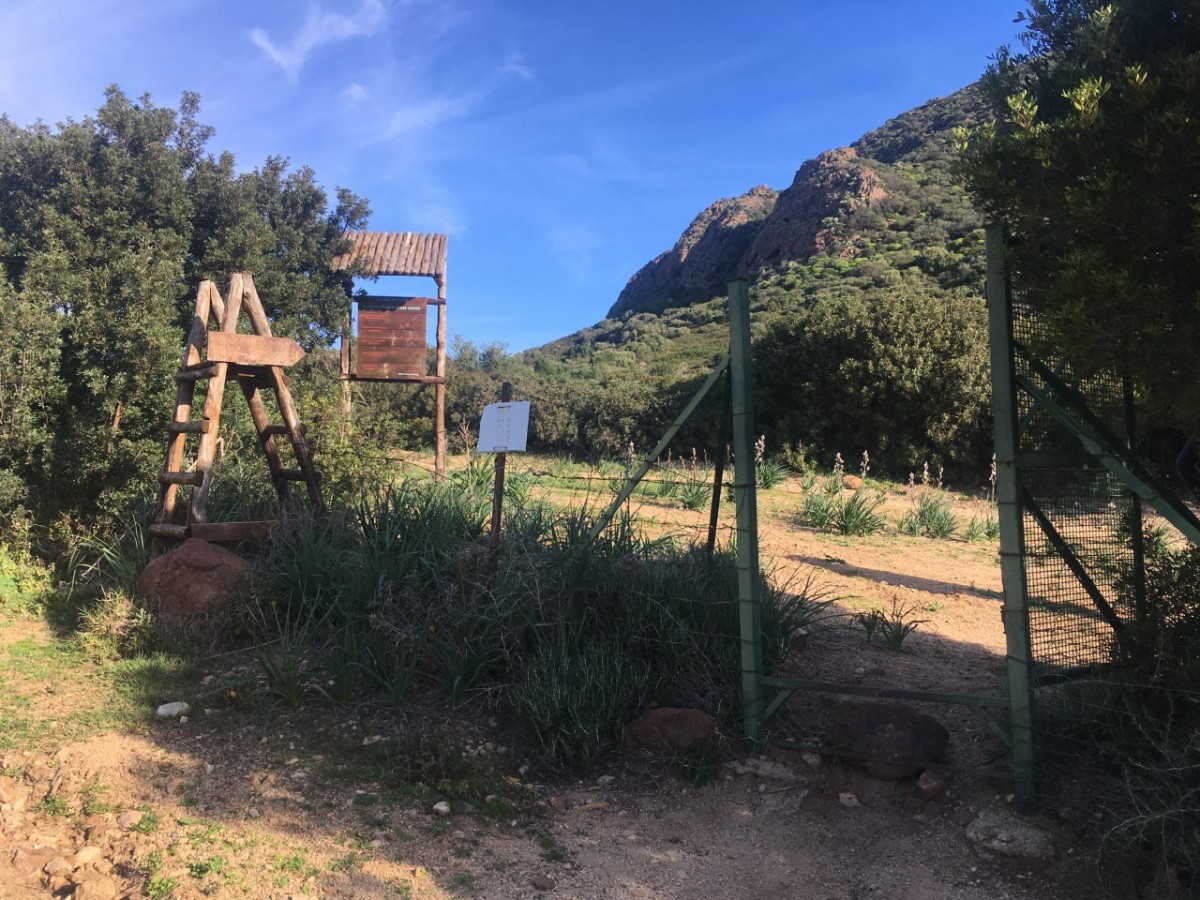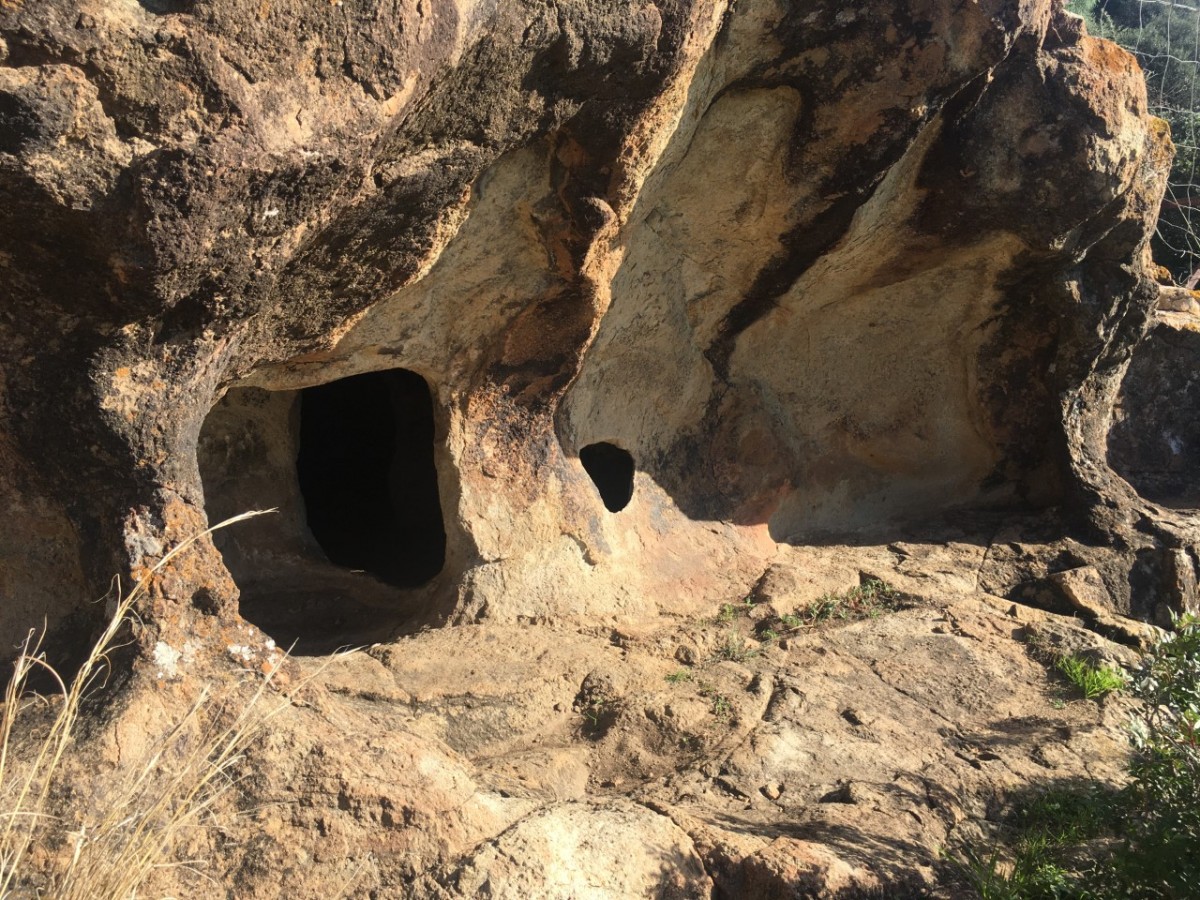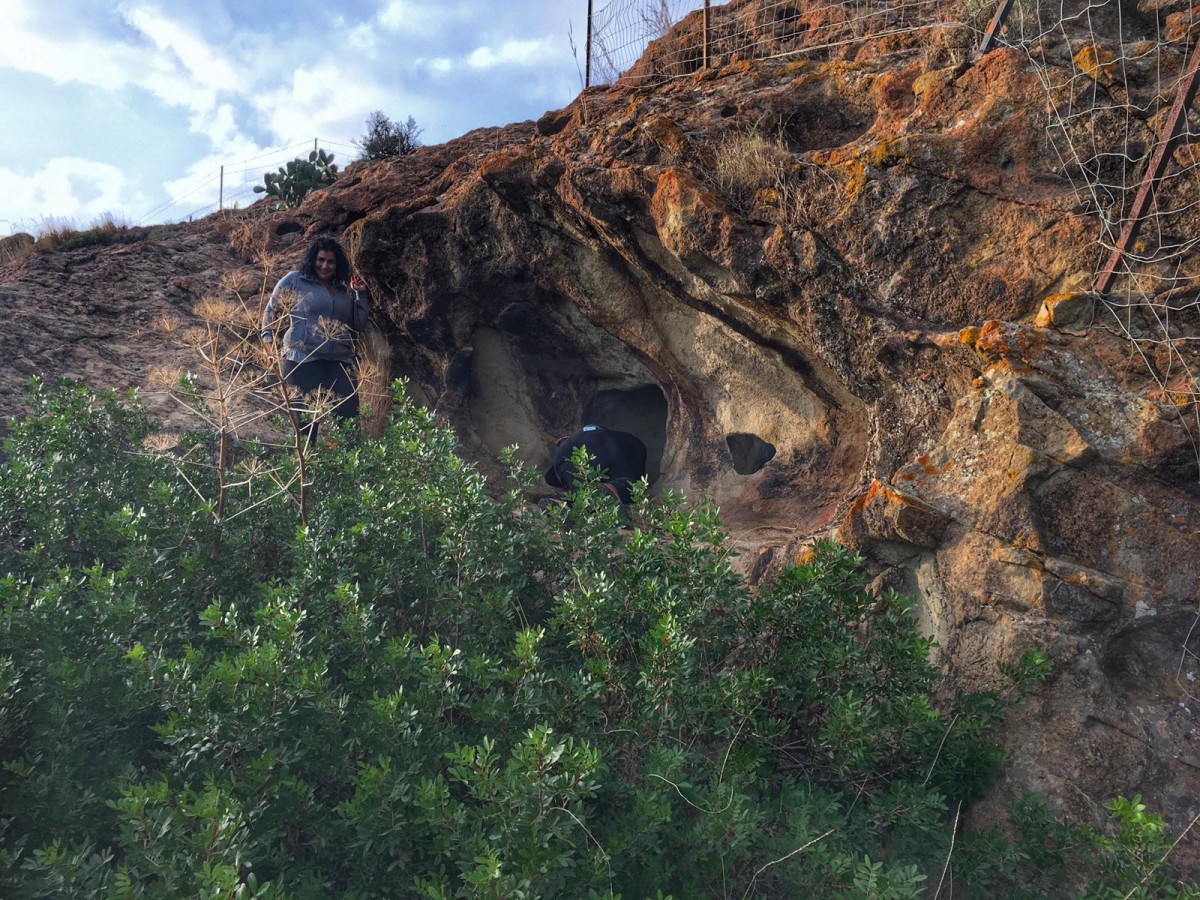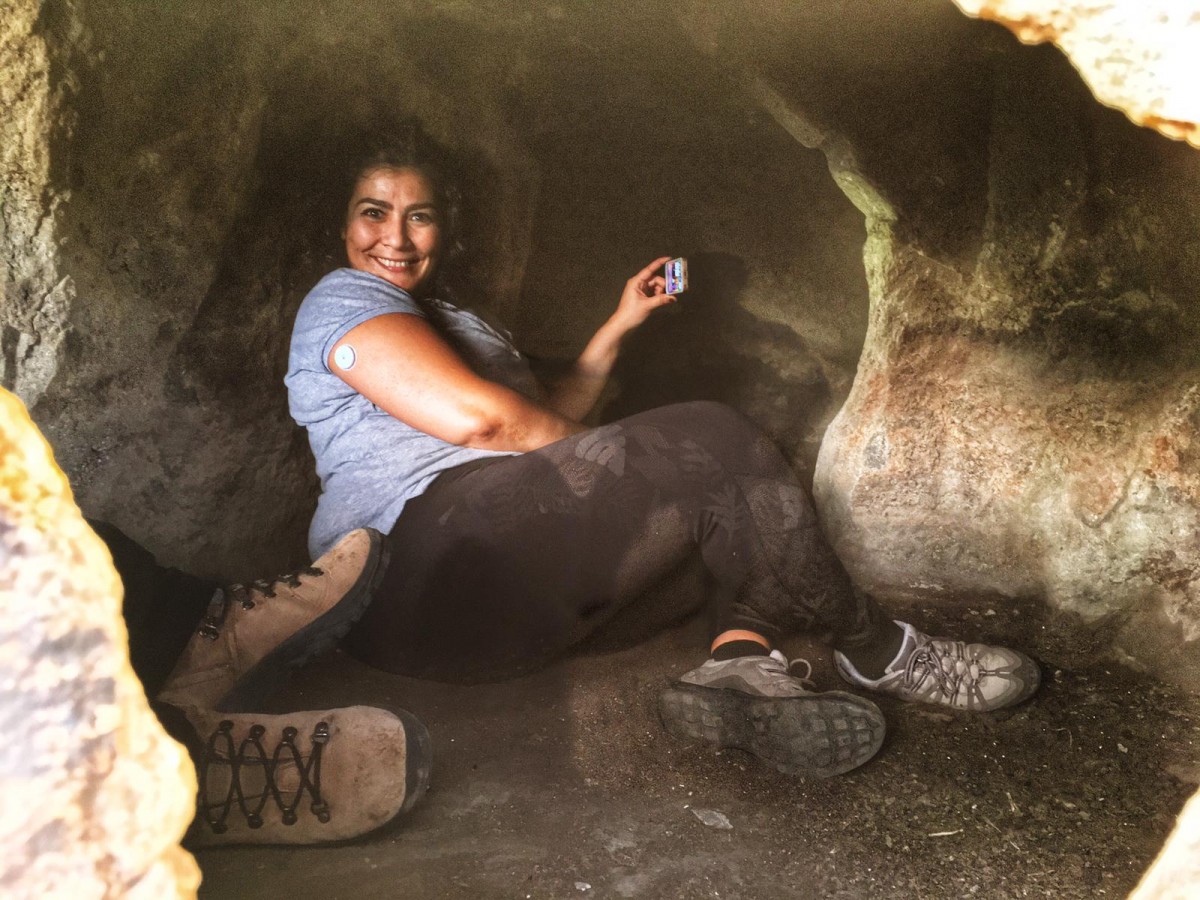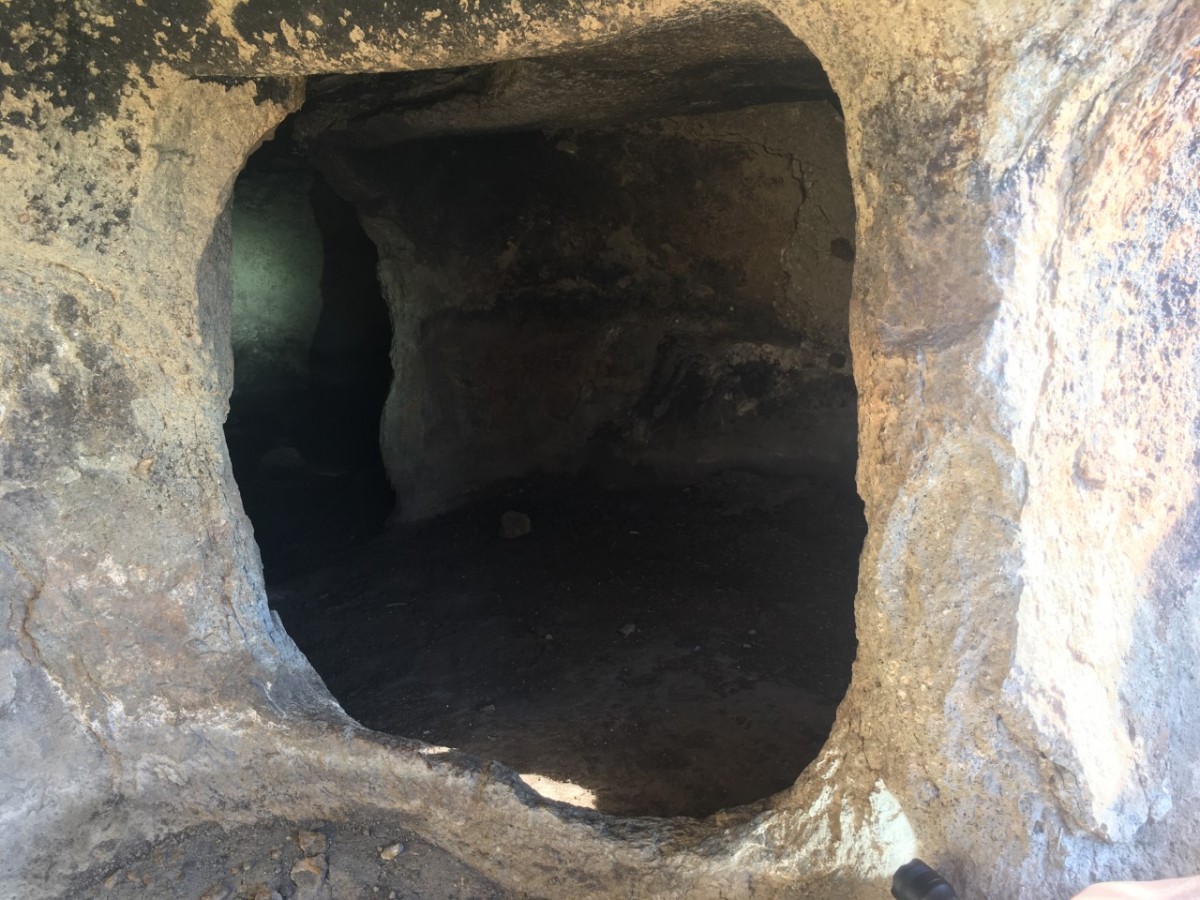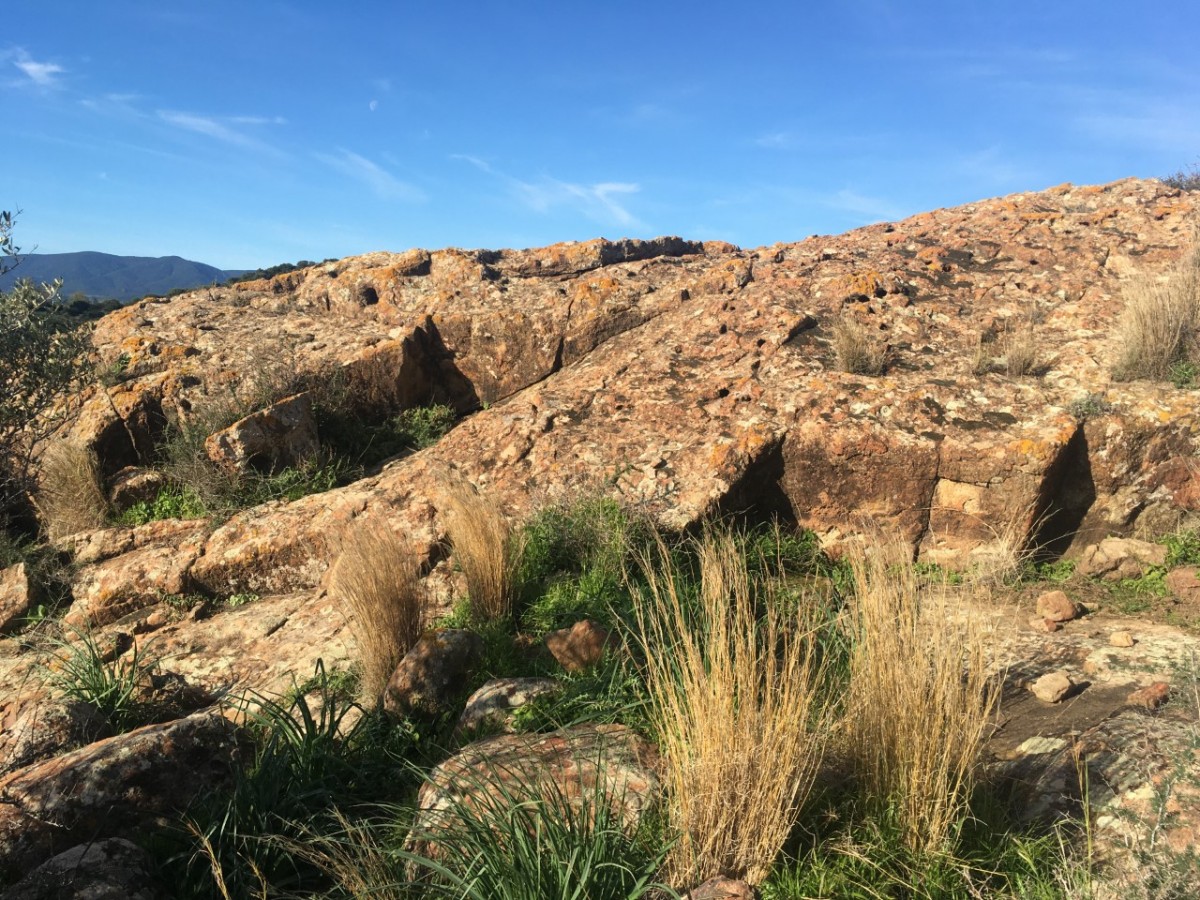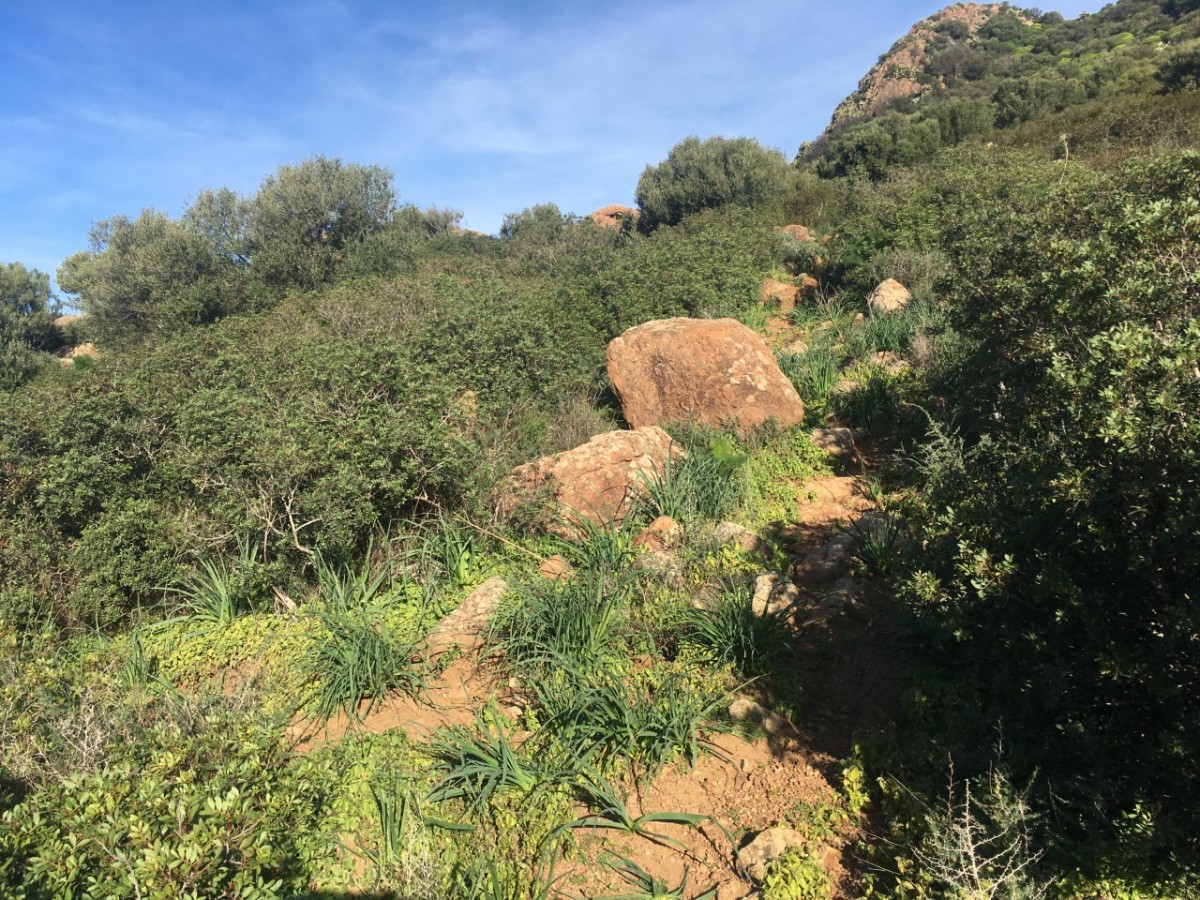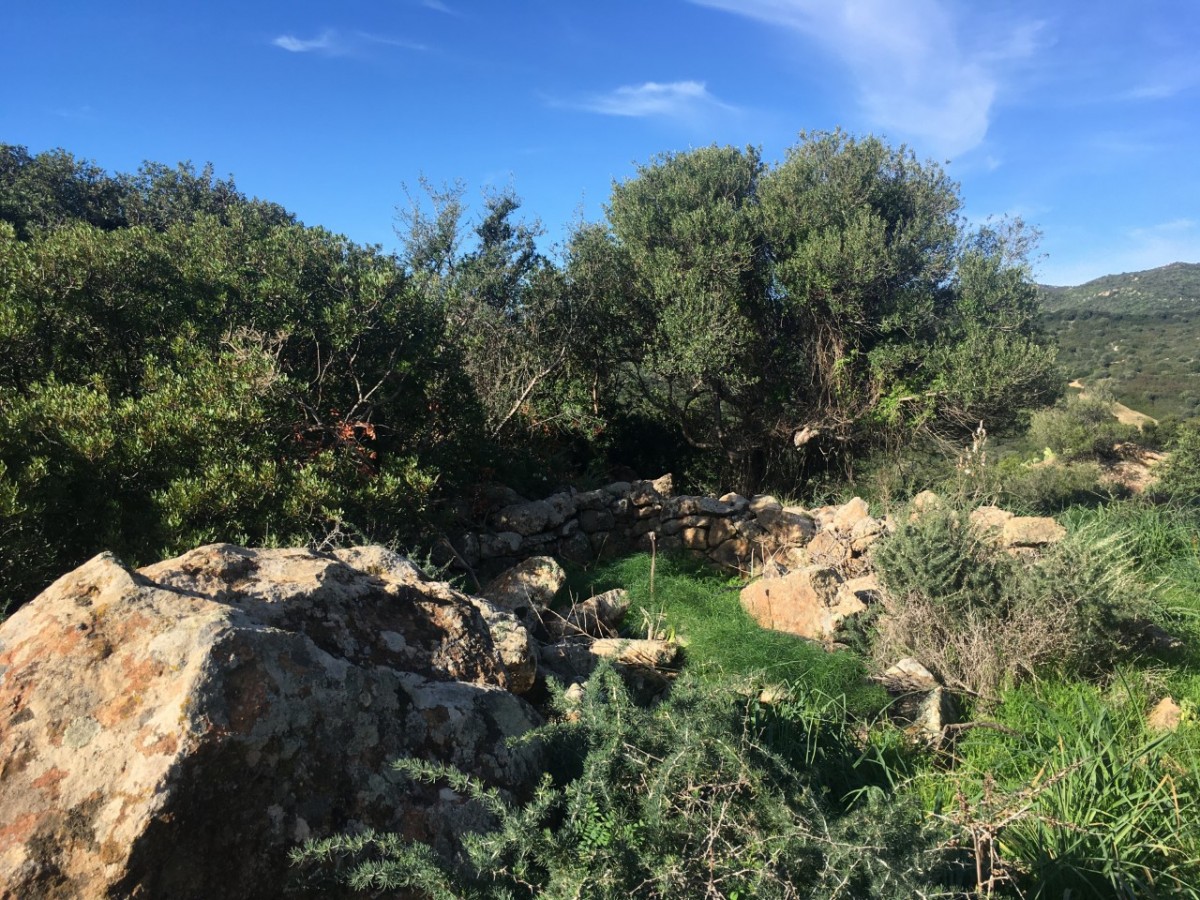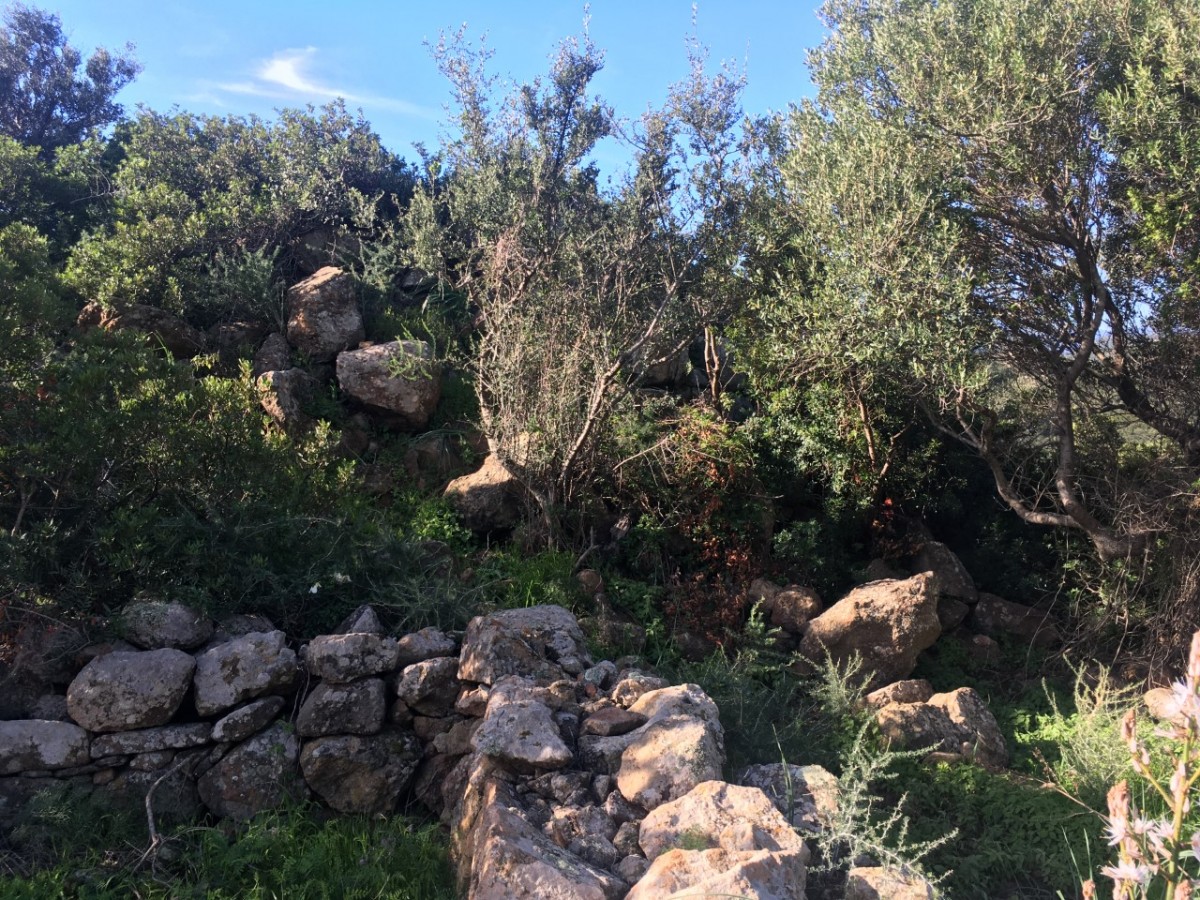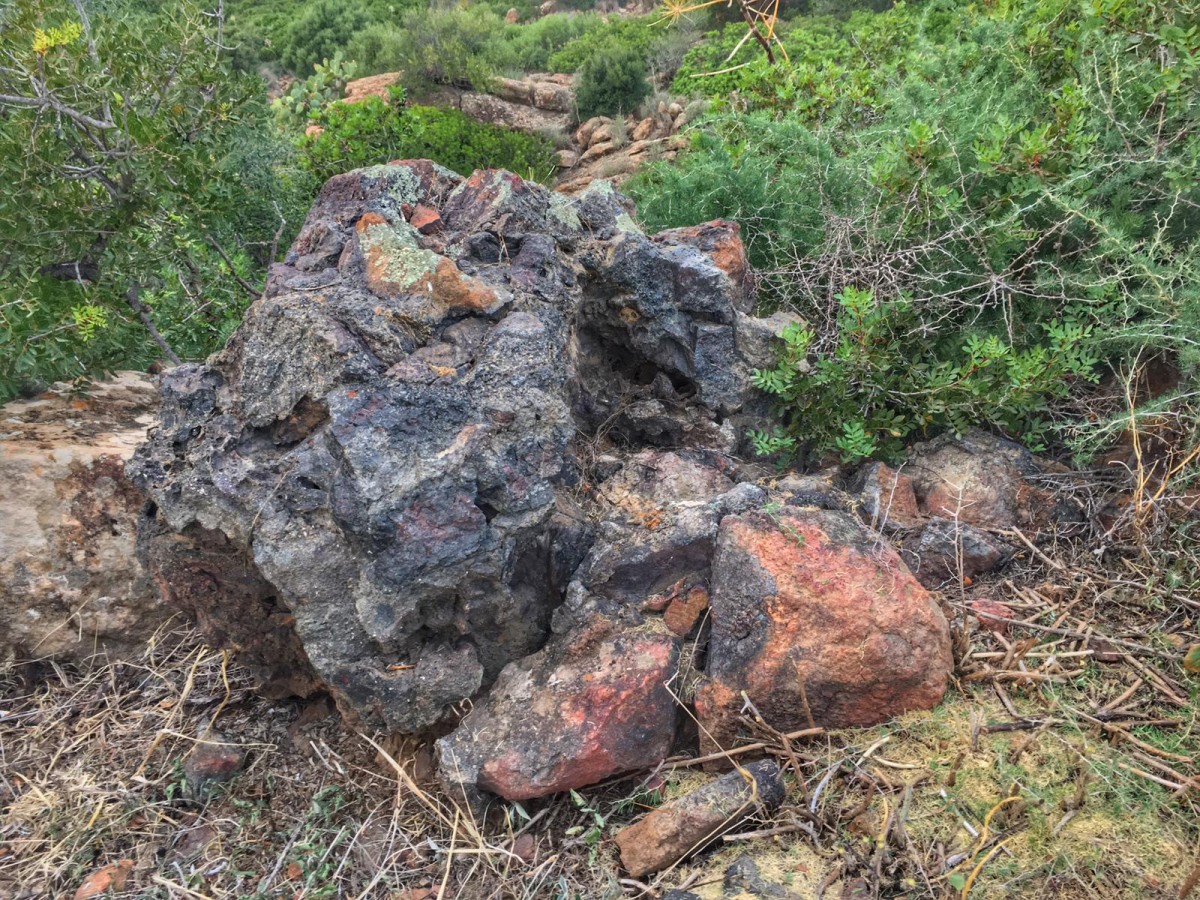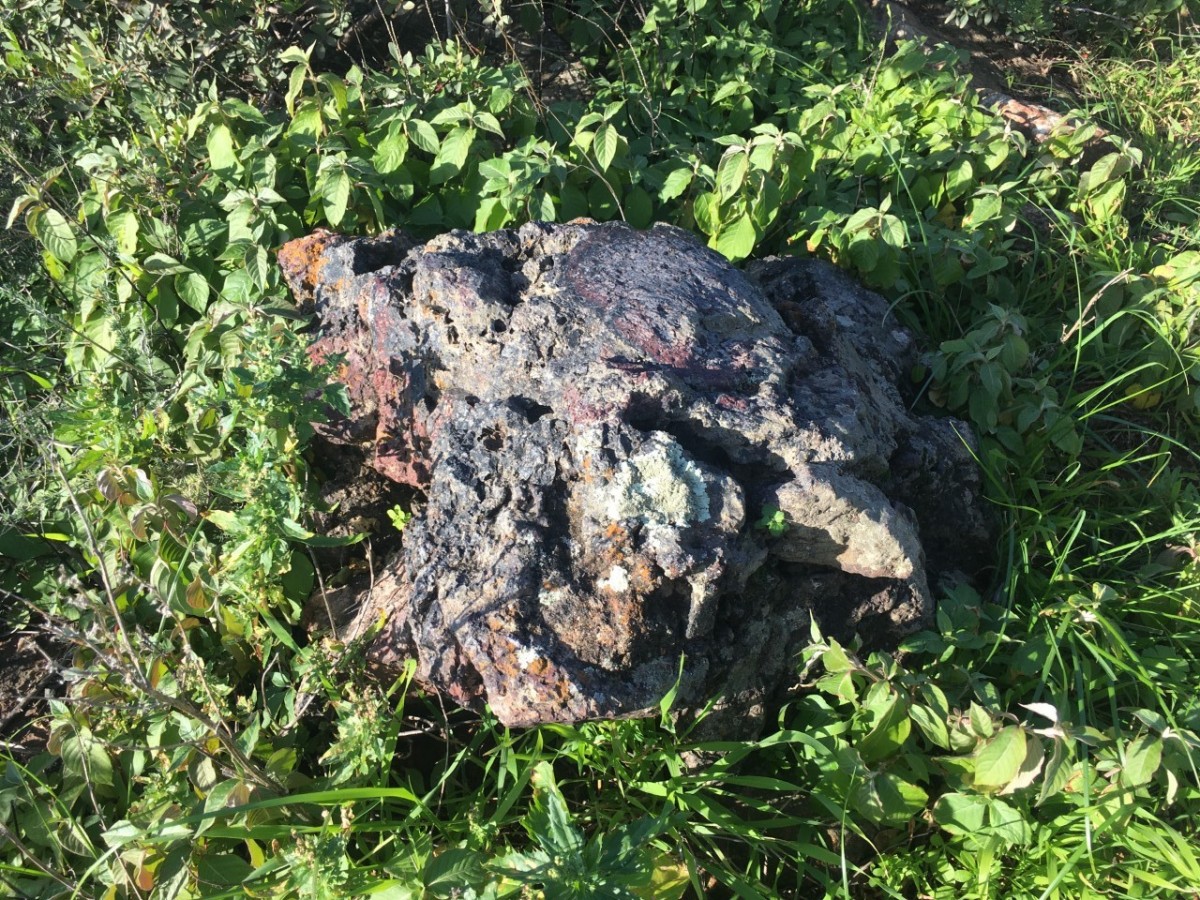Welcome to the second round of “Around with Marta”! This time, always with the spirit of knowing the surroundings of the campsite, I thought to make a “jump into prehistory” and take you to the Domus de Janas and the protonuraghe at the foot of Monte Ferru.
Domus de Janas and Protonuraghe of “Costa sa Perdera” in Monte Ferru
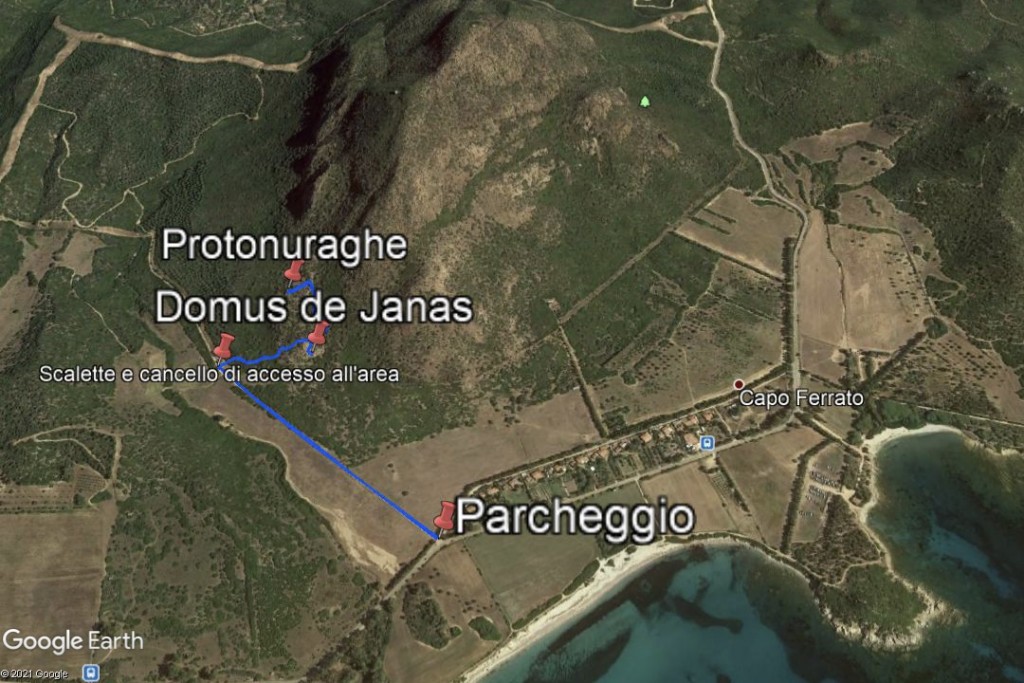
Foto 1
USEFUL INFORMATIONS
Difficulty: Also suitable for children
Distance from Camping Capo Ferrato: Around 8 km
Route: 2 Km
Estimated duration: 1 hour
Clothing: Hiking shoes
Starting Point: Parking at the village of Capo Ferrato
For this route, I indicate several landmarks (photo 1), because the path is not difficult, but the discovery of the various hidden corners needs some more indication! First of all, you have to get to Capo Ferrato (about 8 km from the campsite), at the foot of Montet Ferru the ancient volcano that closes the northern part of Costa Rei (the mountain that from the Camping is seen on the left with the white repeater, to be clear). The Domus is called Costa Sa Perdera: it is a beautiful place that I visited several times both in the morning and at sunset and I must say that with any light I am excited!
Don’t you know what a Domus de Janas is? Despite the numerous legends related to their name, which means “Houses of the Fairies”, these are underground tombs dating back to the first half of the fourth millennium BC: think that these fascinating burials, in some cases similar to small caves, were precisely dug into the rock and since the metals were not yet part of the life of man, They were patiently carved with stone tools… just as they dug stone by stone! This is because prehistoric people believed in the cult of the Mother Goddess (also known as Mother Earth) and they believed that death was like a return to life in the womb and the rock represented this… so imagine what importance the Domus de Janas could have for a prehistoric man!
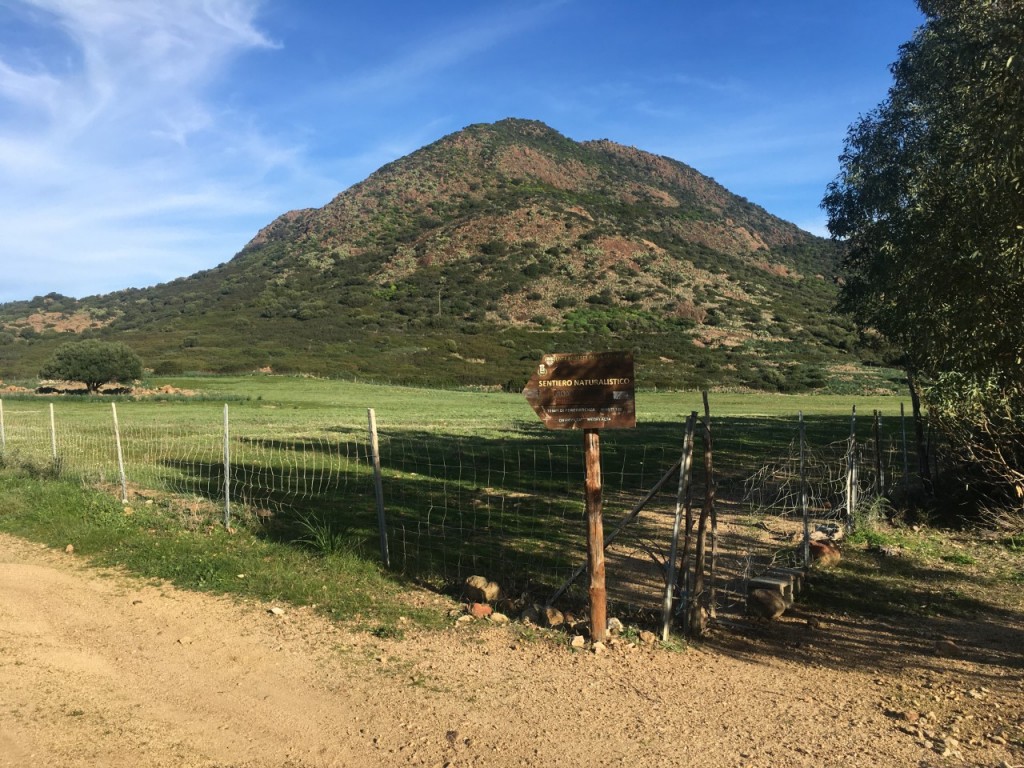
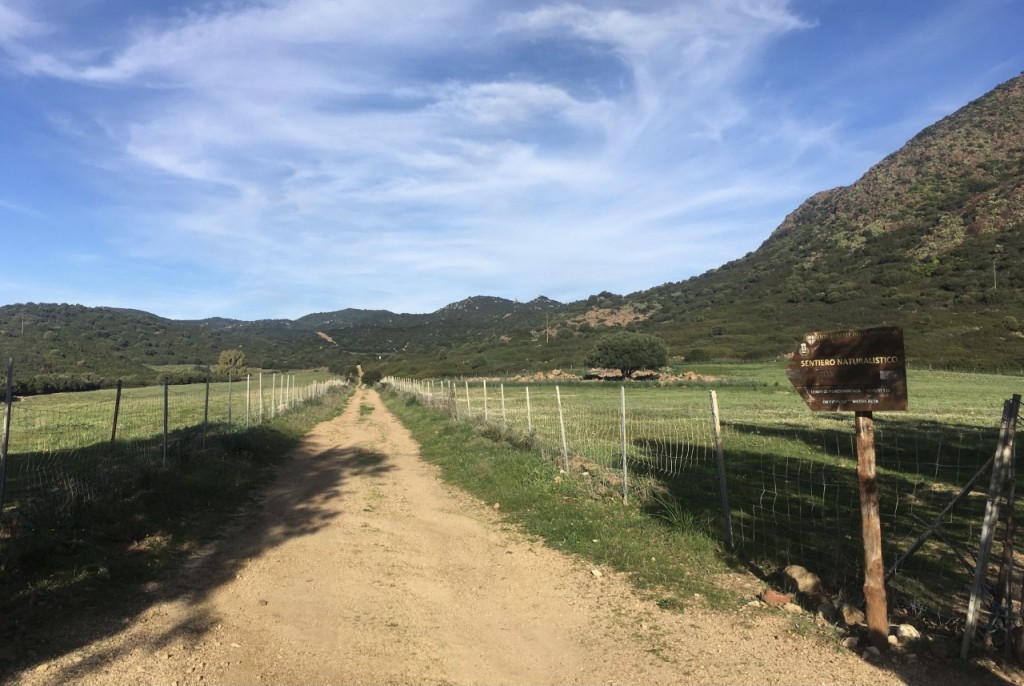
Foto 2 e 3
So… Let’s go! Once in Capo Ferrato, turn towards the village and park the car at the beginning of the path (photos n.2 and 3), or if you arrive by bike you can also continue on the dirt road to the gate and the stairs that delimit the area (photo n.4).
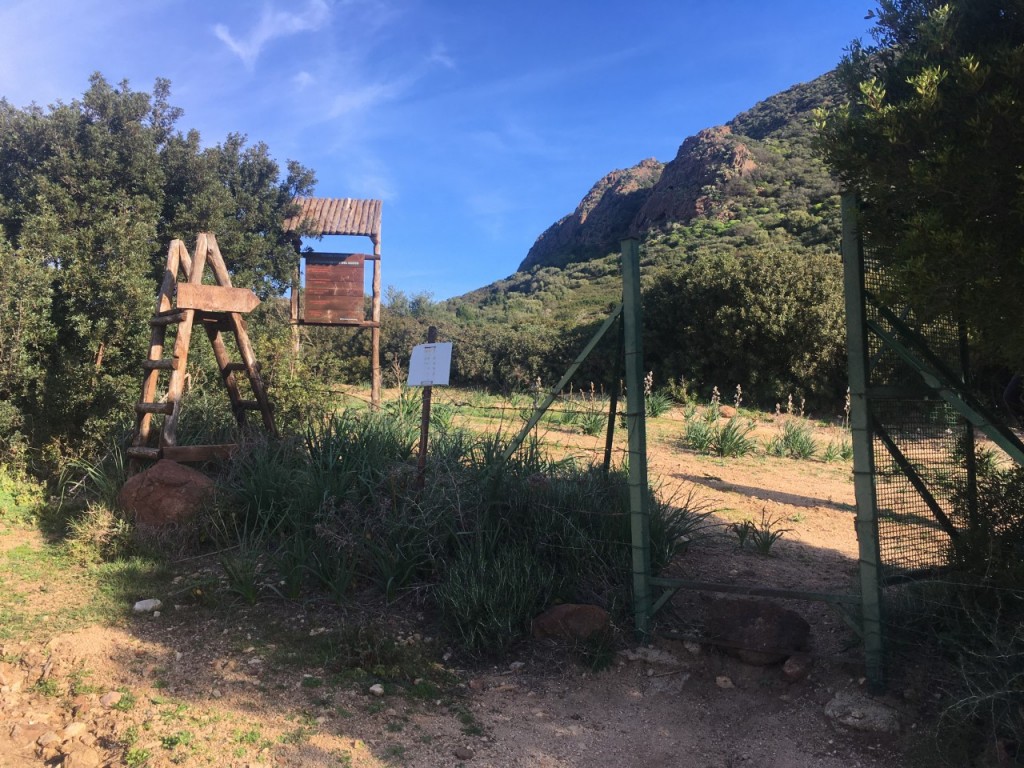
Foto 4
Once inside, exactly opposite is signposted the beginning of the path that leads to the top of Monte Ferru. Following the path, very simple and well traced, we walk about 200 meters and on the right, we find a beautiful rocky pavement (photo n.5) and a sign that indicates the point to reach the Domus (photo n.6). We go over the low network and descend carefully to the left (photo n.7) and finally, we find the Domus de Janas (photo n.8 and 9)!
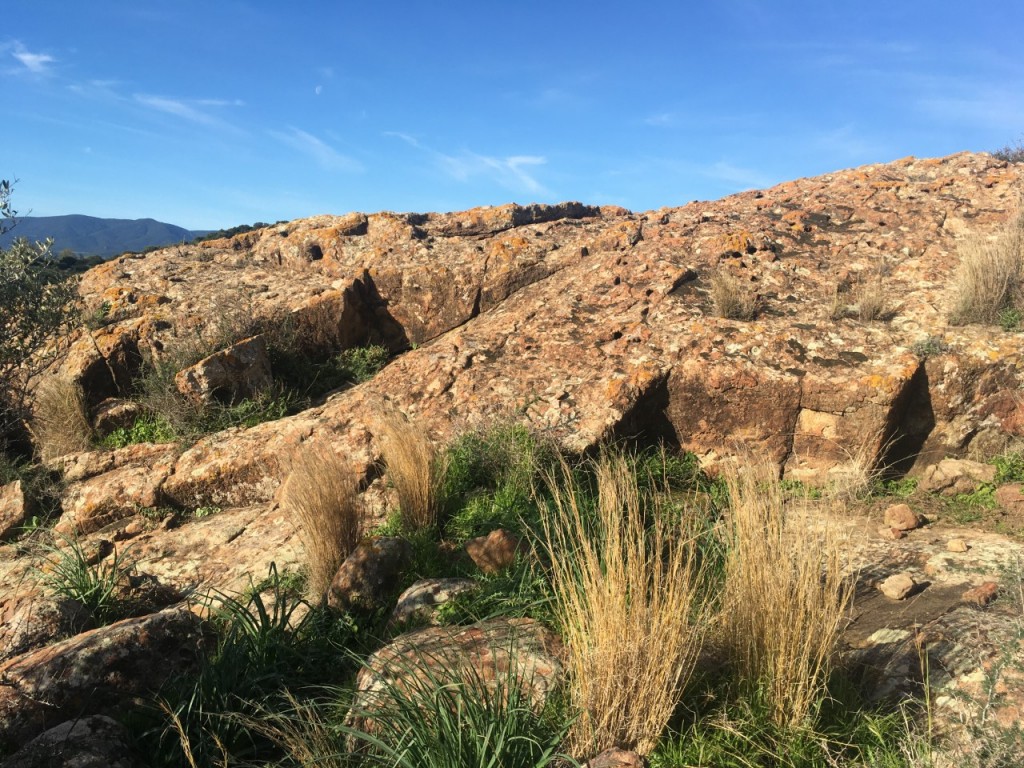
Foto 13
You can see my enthusiasm in exploring the Domus (photos n.10 and 11)! You too can venture into the antecella and even enter the two inner cells, there is no danger, except to get dirty! Remember to bring a small torch, it will be very useful whether you want to explore it, or you prefer not to enter (photo n. 12)! The second hole you see from the outside was not part of the original structure of the Domus, it is much more recent and is due to the erosion of time in the soft volcanic rock of the mountain.
Leaving the Domus we turn back and we realize how the whole rocky area has the appearance of a quarry (photo n.13) even if I have not found documentation about it. We return to the sign and this time we continue following the directions for Monte Ferru and we arrive at an unmarked junction (important note the two rocks in photo n. 14 not to be mistaken): attention because on the right the path continues towards the top of Monte Ferru (a beautiful hike and a path that I will tell you in another round), while we have to go left towards a small path in a north-west direction and we arrive at the protonuraghe!
The protonuraghe “Costa Sa Perdera” has a circular plan and jumps to the eyes of anyone who is built with the same type of rock as Monte Ferru. Unfortunately, the state of conservation is bad, many parts are landslides, but you can climb (photo n. 16) and you realize how it was structured room and how the location in the hill was chosen to dominate the territory below. Paying attention to the brambles and the Mediterranean scrub that has taken possession of the complex we continue the exploration…
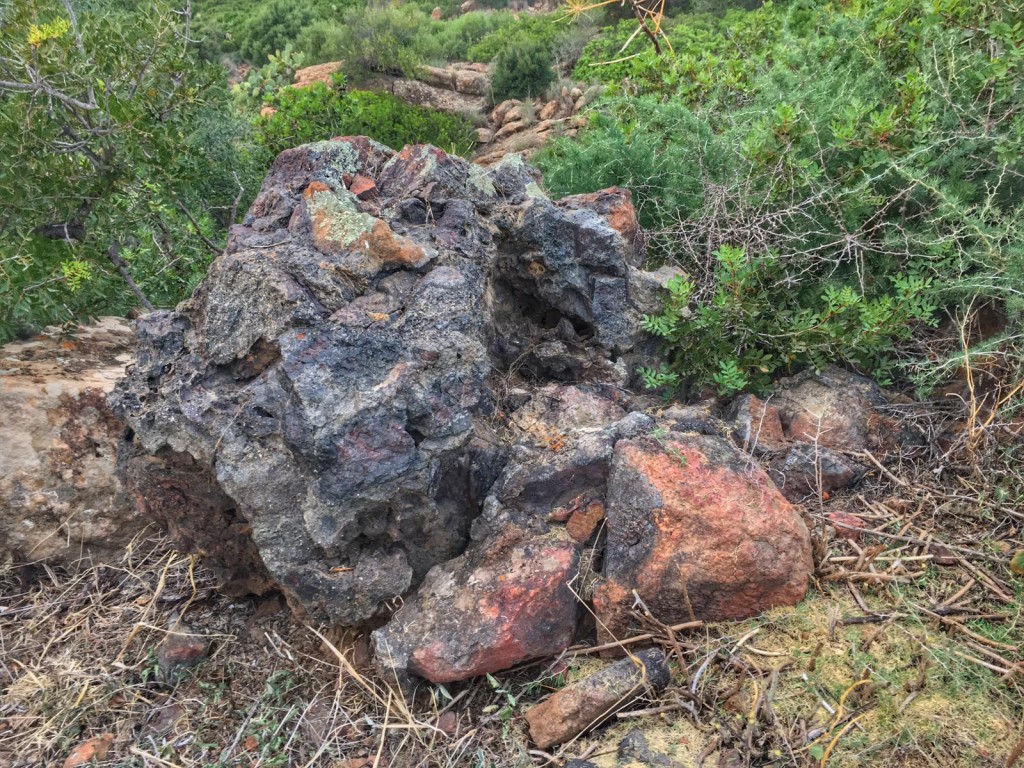
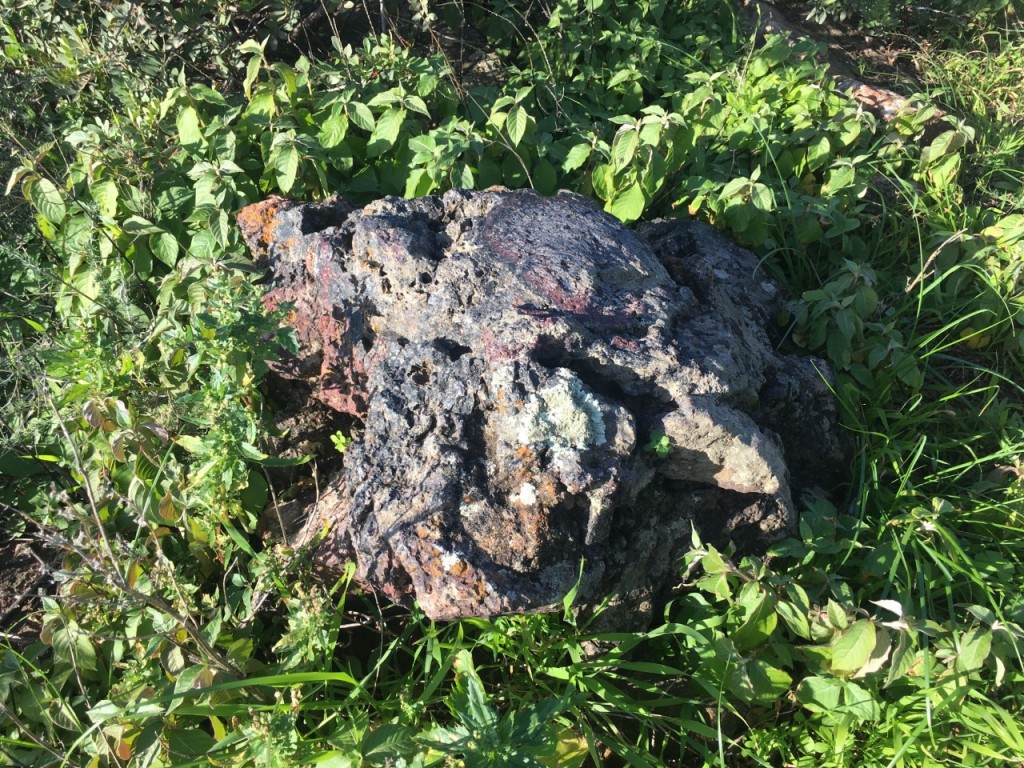
Foto 17 e 18
What amazes us are two particular rocks, completely different from the others (photos n. 17 and 18)! Apparently, they look like only darker rocks, the truth is that they have traces of metal slag and reveal that here there was a remarkable primary melting activity. In fact, with the passing of the centuries, in the Nuragic era, therefore, they could have been used as a melting furnace.
The Nuragics extracted iron, lead, zinc and copper at low temperatures from minerals from the rich surface deposits! To return to the starting point, follow the opposite path.
Monte Ferru has a great prerogative: to make us admire beautiful views, amaze us with the red-orange colors of its rocks and make us curious by making exciting jumps in time through the millennia that led man to choose it as his home!
Many of you know that my passion is archaeology, so, with this roadbook I tried to convey the emotions that such special places if properly valued, can give to everyone!
To the next adventure!
Marta
For informations
-
- SECRETARY AND INFORMATION:
info@campingcapoferrato.it
- SECRETARY AND INFORMATION:
-
- SUMMER ADDRESS:
Villaggio Camping Capo Ferrato – Costa Rei – 09040 Castiadas (CA) – Sardegna – Italia - TELEPHONE (SUMMER):
+39.070.991012
- SUMMER ADDRESS:
- WINTER ADDRESS:
Muravera srl – Via Cilea 98 – 09045 Quartu S.Elena (CA) – Sardegna – Italia - TELEPHONE (WINTER):
+39.070.885653
Estimate YOUR QUOTE
